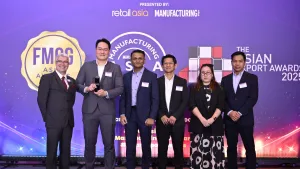
Japanese OEMs battle to compete in China's car market
Nissan, Honda, and Toyota face a massive year-on-year sales decline.
Japanese automakers are struggling to compete in China’s car market.
According to GlobalData, Japanese Original Equipment Manufacturers (OEMs) are not taking proactive steps in the New Energy Vehicle (NEV) transformation.
As the world’s largest automobile market, China has experienced significant changes in recent years, particularly with the rapid adoption of NEVs.
Chinese OEMs have capitalised on this transformation and have surpassed foreign brands.
Domestic NEV sales in China exceeded a penetration rate of 25% in 2022, reaching over 50% by July 2023.
In 2023, Chinese OEMs became the world’s largest automobile exporters, surpassing Japan with over four million vehicle exports.
Meanwhile, Japanese OEMs have seen a decline in their market share in China.
In 2020, Japanese car sales in China exceeded five million units with a penetration rate of over 25%.
However, as NEV sales skyrocketed in 2021, surpassing three million units with year-on-year growth of over 150%, Japanese brands experienced a downward trend in market penetration.
Several Japanese brands, including Subaru, Suzuki, Mazda, and major automakers like Toyota, Honda, and Nissan, have faced declining sales in China.
Nissan sold 0.66 million units in 2023, reflecting a 19.4% year-on-year decline. Despite significant price reductions in 2024, Honda sold only 0.45 million units from January to July, a 24.5% year-on-year decline. Toyota also saw a 4.4% year-on-year decline, selling nearly 1.8 million units.
Some Japanese brands, such as Acura and Mitsubishi, have announced their withdrawal from the Chinese market due to poor sales performance, and Infiniti is also on the verge of exiting.
The challenges faced by Japanese brands in China include their slow adaptation to the NEV transformation, loss of their fuel efficiency advantage, reputational damage from fraud scandals, weaker brand value compared to European and U.S. competitors, and an inability to meet growing technological demands.















